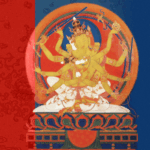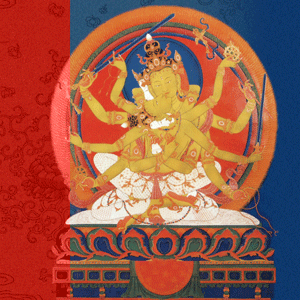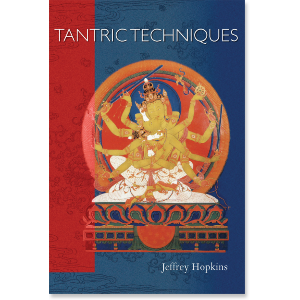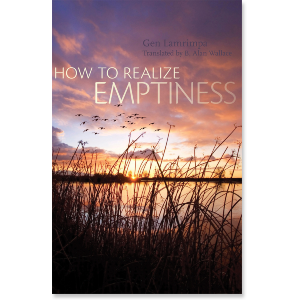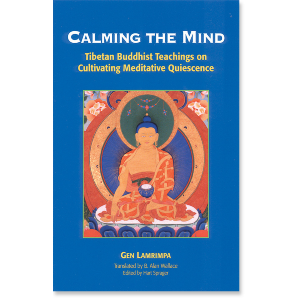When we do deity yoga we need to be very careful that our unconscious contents don’t arise and mix into the practice or get projected. There could be no better guide through potential pitfalls than Jeffrey Hopkins, perhaps the most widely respected American scholar of Tibetan Buddhism, ex-translator for the Dalai Lama, and author extraordinaire.
Tantric systems often treat as external forces what many other psychologies would consider internal; in Jungian terms, the wisdom behind this tantric externalization is that autonomous complexes are thereby confronted in a manner preventing identification with them and thus being overpowered by them. Also, the contemporary psychological exaggeration in which complexes are considered to be “mine” as if they were somehow within one’s sphere of control becomes impossible. On the negative side, excessive projection onto the environment could lead to misidentifying as external the source of what are actually internal problems with the result that one becomes paranoically concerned with outside forces—be these beings on a different plane or just other people in one’s environment—which are actually projections of one’s own afflictive emotions. Indeed, some practitioners seem caught in a process of external projection that they seek to relieve through the performance of rites. Still, I do not want to fall into the arrogance of the assumption that only projection is involved; I by no means feel justified in assuming that there are not harmful (or helpful) external entities on a subtle level.
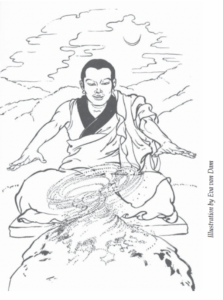
Many of the purificatory steps in Action Tantra are concerned with cleansing the environment and oneself of “obstructors”—these being protection through mantra and seal, self-protection, expelling obstructors in the body, creating vajra armor, dispelling obstructors, removing contamination, again dispelling obstructors, self-protection, and the seven steps of place-protection. The number of times that such rituals are performed suggests that we live in a world bombarded with counterproductive forces, whether their source be external or internal, and that ordinary life is buffeted and swayed by them. When these are understood to include autonomous complexes (as I think they should be), the picture is of a mind subject to a continuous barrage of influences of its own making, much like Freud’s depiction of the unconscious as a seething cauldron of repressed impulses seeking expression, necessary to be held in check, constantly afflicting one’s perceptions and interactions but, for the most part, working unseen havoc. The practitioners themselves, their place of practice, the water with which they bathe, the dirt (like a soap) they use to wash their bodies, their hair, the deity to be invited, and the offerings to be given to the deity are cleansed of the contamination of these forces. At the end of the preparations, all obstructors in the area are bound, and then in what would be redundant were it not for the near uncontrollability of such contents (remember Jung’s reference to their “impishness”), a fence is erected to keep out obstructors. This not being enough, a roof of interlaced vajras is erected on the fence, and a blazing mass of fire outside all of this closes off the area. Now that elements causing interference and interruption have been put at bay, the meditation can begin.
It is said that on the night before the dawn of his enlightenment Shâkyamuni Buddha conquered with the meditative stabilization of love a host of demons, attractive and unattractive, that appeared to him. At this point in tantric meditation, however, a massive defense-structure to keep demons away is erected, albeit within a motivation of love and compassion. Perhaps these defenses are used to create a space in which a basically diseased mind can begin to create positive mental forces, but it is also possible that they are used within a context of projection and denial and are aimed at forestalling recognition of their origin within oneself. It is not difficult to imagine that someone attempting this yoga could become a rather nasty person to live with, constantly projecting inner impulses onto the environment and fighting against others in order to ward off evil forces that actually are that person’s own afflictive emotions. Still, the quasi-otherness with which these forces are treated constitutes recognition that despite the basic Buddhist doctrine that contamination is from within, the extent of this contamination is so great, so difficult to face, so intimately associated with our being and, when it becomes close to consciousness, so liable to overpower the personality, that it is necessary to treat them under the guise of otherness. Jung’s descriptions of the problems attendant upon inflation revealed the enormity of the enterprise of deity yoga; here, from within this traditional system itself, we gain a sense of the condition of the ordinary mind as swamped in a sea of karmically created forces. Again, a picture of the enormity of the task of purification that is at the heart of deity yoga is painted.

Jeffrey Hopkins, PhD, served for a decade as the interpreter for the Dalai Lama. A Buddhist scholar and the author of more than thirty-five books, he is Professor Emeritus at the University of Virginia, where he founded the largest academic program in Tibetan Buddhist studies in the West.

